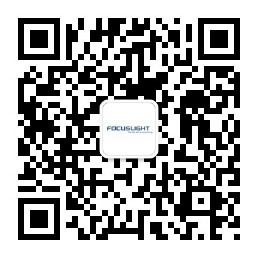- Products
Products
Laser Optics Components - Applications
- Core Technologies
Core Technologies
- Investor Relations
Investor Relations
- News & Events
- Support
- About Us
- Career
- Contact
-











 Return
Return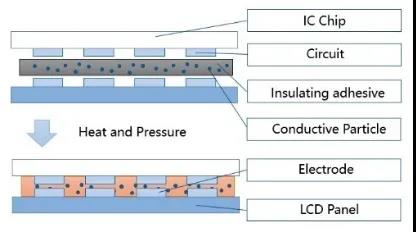 A typical anisotropic conductive film (ACF) bonding process for LCD panels. IC: integrated circuit. Courtesy of Focuslight.
A typical anisotropic conductive film (ACF) bonding process for LCD panels. IC: integrated circuit. Courtesy of Focuslight.
 With the addition of beam shaping and homogenization by micro-optics, diode lasers offer highly controllable spot size, extremely high-energy uniformity, and high energy density, which all contribute unique benefits in display manufacturing. Courtesy of Focuslight.
New developments in display technologies are requiring ACF bonding processes to be applied within a much smaller area, such as the extremely narrow frame of a flexible display. The bulky size of conventional thermal heads makes these bonding applications infeasible, which has prompted a growing interest in noncontact laser heating tools. Such tools offer flexible beam size, energy density, and process curves to enable an alternative rapid, noncontact bonding process.
With the addition of beam shaping and homogenization by micro-optics, diode lasers offer highly controllable spot size, extremely high-energy uniformity, and high energy density, which all contribute unique benefits in display manufacturing. Courtesy of Focuslight.
New developments in display technologies are requiring ACF bonding processes to be applied within a much smaller area, such as the extremely narrow frame of a flexible display. The bulky size of conventional thermal heads makes these bonding applications infeasible, which has prompted a growing interest in noncontact laser heating tools. Such tools offer flexible beam size, energy density, and process curves to enable an alternative rapid, noncontact bonding process.
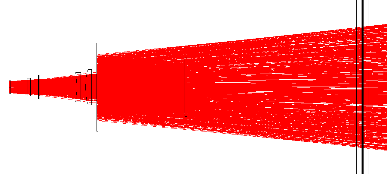 An example of light distribution in an ACF bonding process as provided by an optical design for a 300- × 3-mm laser beam. Courtesy of Focuslight.
An example of light distribution in an ACF bonding process as provided by an optical design for a 300- × 3-mm laser beam. Courtesy of Focuslight.
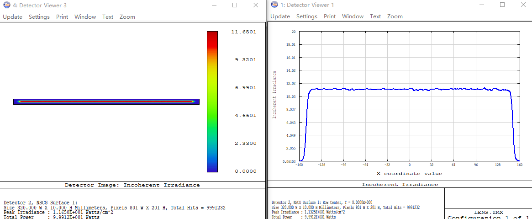 Beam spot and energy distribution of the 300- × 3-mm laser beam. Courtesy of Focuslight.
ACF can connect two materials with different characteristics and form a stable electrical connection along the z direction while maintaining electrical insulation in the xy directions. The blend of thermoplastic elastomer and thermosetting epoxy polymer can provide electrical insulation, protect metallic contacts from mechanical damage, ensure stable adhesion between two materials, and provide good moisture and corrosion resistance.
In mature applications, material curing with contact pressure applied by heat press plates is a stable and reliable solution. Packaging technologies such as film on glass, chip on flex, and chip on glass have been widely used.
Beam spot and energy distribution of the 300- × 3-mm laser beam. Courtesy of Focuslight.
ACF can connect two materials with different characteristics and form a stable electrical connection along the z direction while maintaining electrical insulation in the xy directions. The blend of thermoplastic elastomer and thermosetting epoxy polymer can provide electrical insulation, protect metallic contacts from mechanical damage, ensure stable adhesion between two materials, and provide good moisture and corrosion resistance.
In mature applications, material curing with contact pressure applied by heat press plates is a stable and reliable solution. Packaging technologies such as film on glass, chip on flex, and chip on glass have been widely used.
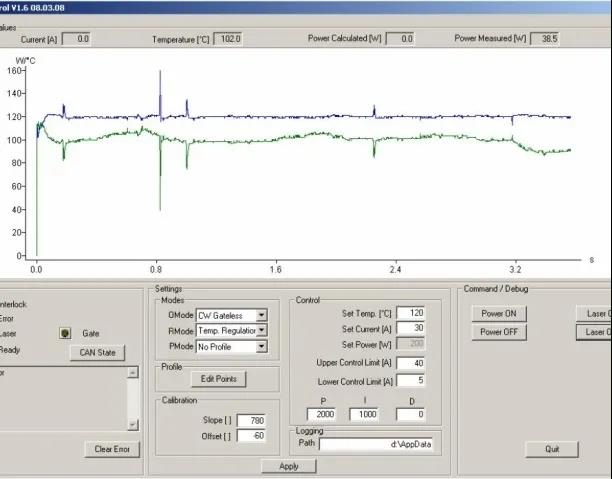
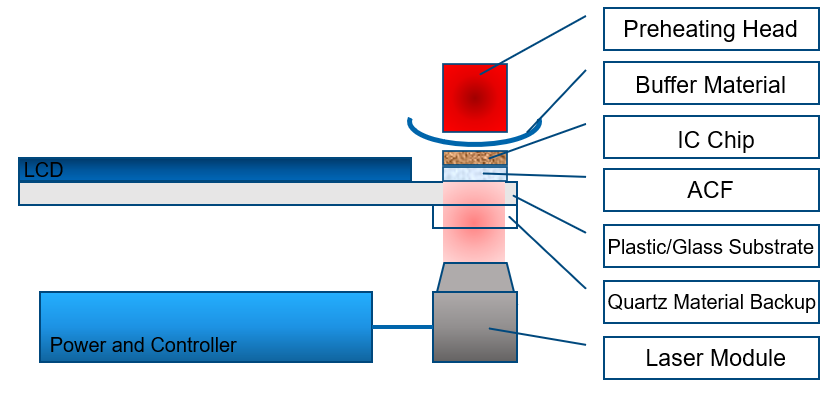 A laser-based ACF bonding system design. Courtesy of Focuslight.
Laser-based anisotropic conductive film material curing processes can reduce the processing time of traditional contact heat press methods due to their unique noncontact heating capabilities and high instantaneous heat output. The laser-based ACF bonding process described is particularly suitable for large-size displays with a small bonding pitch and a long bonding length, making it an attractive solution as the display industry continues to evolve.
A laser-based ACF bonding system design. Courtesy of Focuslight.
Laser-based anisotropic conductive film material curing processes can reduce the processing time of traditional contact heat press methods due to their unique noncontact heating capabilities and high instantaneous heat output. The laser-based ACF bonding process described is particularly suitable for large-size displays with a small bonding pitch and a long bonding length, making it an attractive solution as the display industry continues to evolve.




